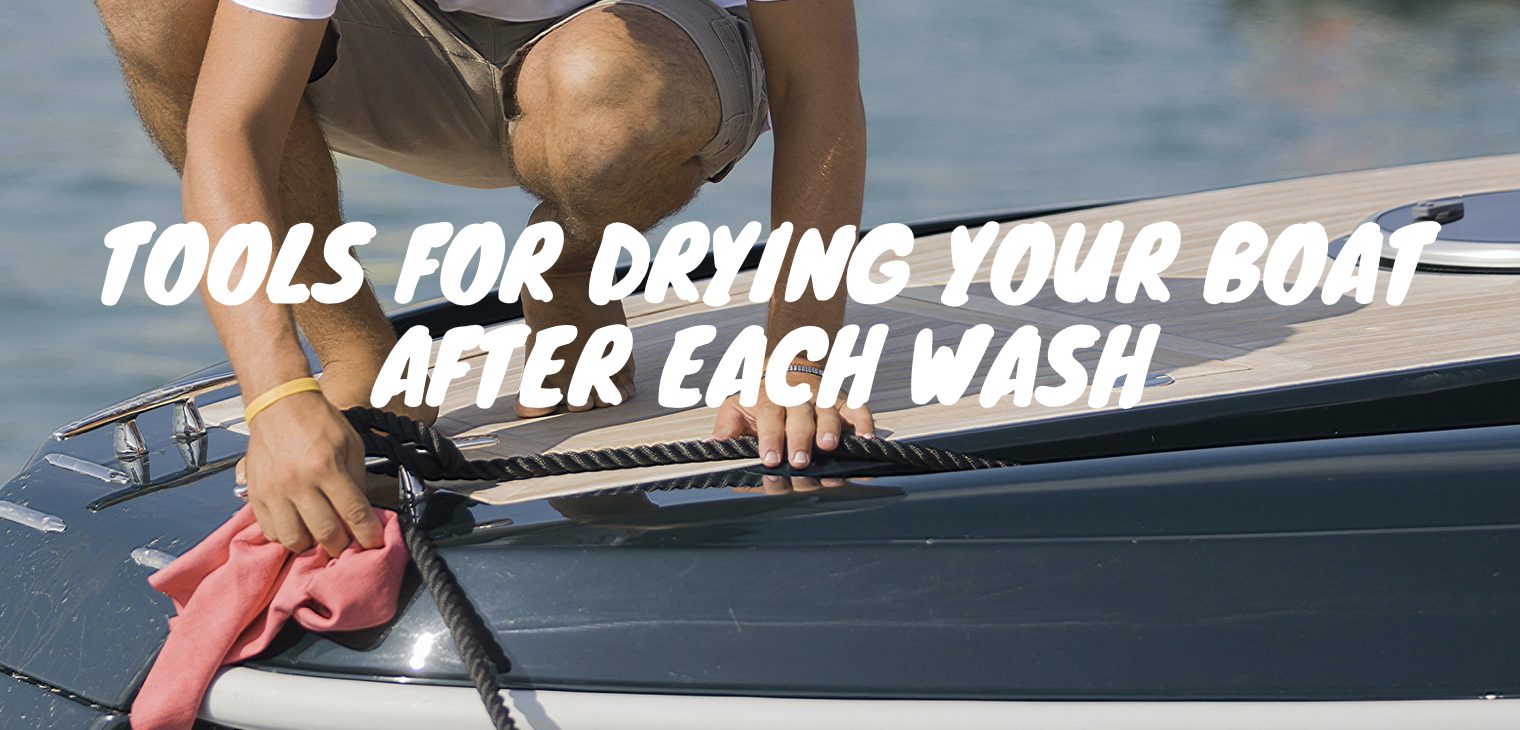
It’s getting to be that time where boat owners are doing a little spring cleaning and washing their boats before dropping them into the water. Drying your boat can be a little difficult since there is a lot of surface area and by the time you’re done washing, the whole boat would have probably dried and left water spots.
Today’s post is all about drying your boat after each wash so you can keep it looking shiny and pristine at your lakefront property!
Cleaning your boat in sections is a good way to ensure you have time to dry it before water marks are left. For example:
- Wash entire flybridge then dry entire bridge
- Clean bow then dry it
- Wash port and starboard side then dry each side respectively
- Clean and dry cockpit and stern
- Dry the hull sides as you wash them
Water Blade- Taking the water blade to each section first, especially the windows this way it’s much easier to chamois after. Breaking it into sections is the best way to ensure there are no hard water spots and the end result is streak free.
Microfiber Cloth- These premium cloths are made of non-scratching microfibers that are ultra-absorbent and super gentle on almost all surfaces. The ultra-fine fibers act like dirt magnets to all coated and non-coated finishes, fiberglass, windows, polished and plated metals, brass, and electronics. Put away that old t-shirt or dish rag and grab a microfiber cleaning cloth. These cloths are reusable and machine washable.

Natural Chamois- There are some surfaces such as rails, cleats and crannies that don’t lend themselves to squeegees. That’s when a chamois skin can come in handy. Many old salts believe there’s nothing better for drying surfaces to a spot-free shine. You’ll have to soak the skin because natural chamois dry out like a stiff board between uses. Once it softens up, wring it out and start wiping. Wring it repeatedly as it absorbs water. On the downside, some believe that natural chamois are more abrasive than synthetic chamois or microfiber towels, and tend to remove the waxed finishes from surfaces.
Synthetic Chamois- Today, synthetic chamois are more prevalent than the natural variety, and one of most ubiquitous aboard boats is the Absorber ($13.99, basspro.com). It comes in a plastic canister to store between uses. The 27-by-17-inch towel remains soft and pliable between uses. Made of high-tech PVA material, it has a unique open-cell structure that absorbs water three times faster than a regular towel or natural chamois. It is also machine-washable, and can be stored wet without inducing mildew, mold or rot. Wring it out when it’s full of water and then keep drying.
Quick-Dry Mops- Absorbent mops such as the Swobbit Quik Dry mop ($38.37, amazon.com) use synthetic chamois strips, and are great for non-skid surfaces and tight spots. The Quik Dry mop can be wrung out by hand once it reaches its saturation point, which is five times its weight in fluids. It attaches to the Swobbit Perfect Pole telescoping handle ($38.99 for 5- to 9-foot model). Use it to dry tall structures such as the upper pipework of a tuna tower that you cannot reach.

Leaf Blower- On cool days, you’re not racing the sun. In fact, you’re looking for ways to shed water more quickly after you rinse the boat. That’s when a cordless leaf blower such as the Worx 40V Power Share Turbine ($99, amazon.com) can help. Use it to whisk sheets of water away from decks, windows and other surfaces before you do a final wipe down to leave the boat dry, shining and free of hard-water spots.
Owning your own boat at your new lakefront home is wonderful! You will create so many long lasting memories with friends and family… But making sure you have a clean and streak free boat is important to show off as well and it will help ensure a longer life for your boat!
Posted by Scott Freerksen “The Lake Guy”
